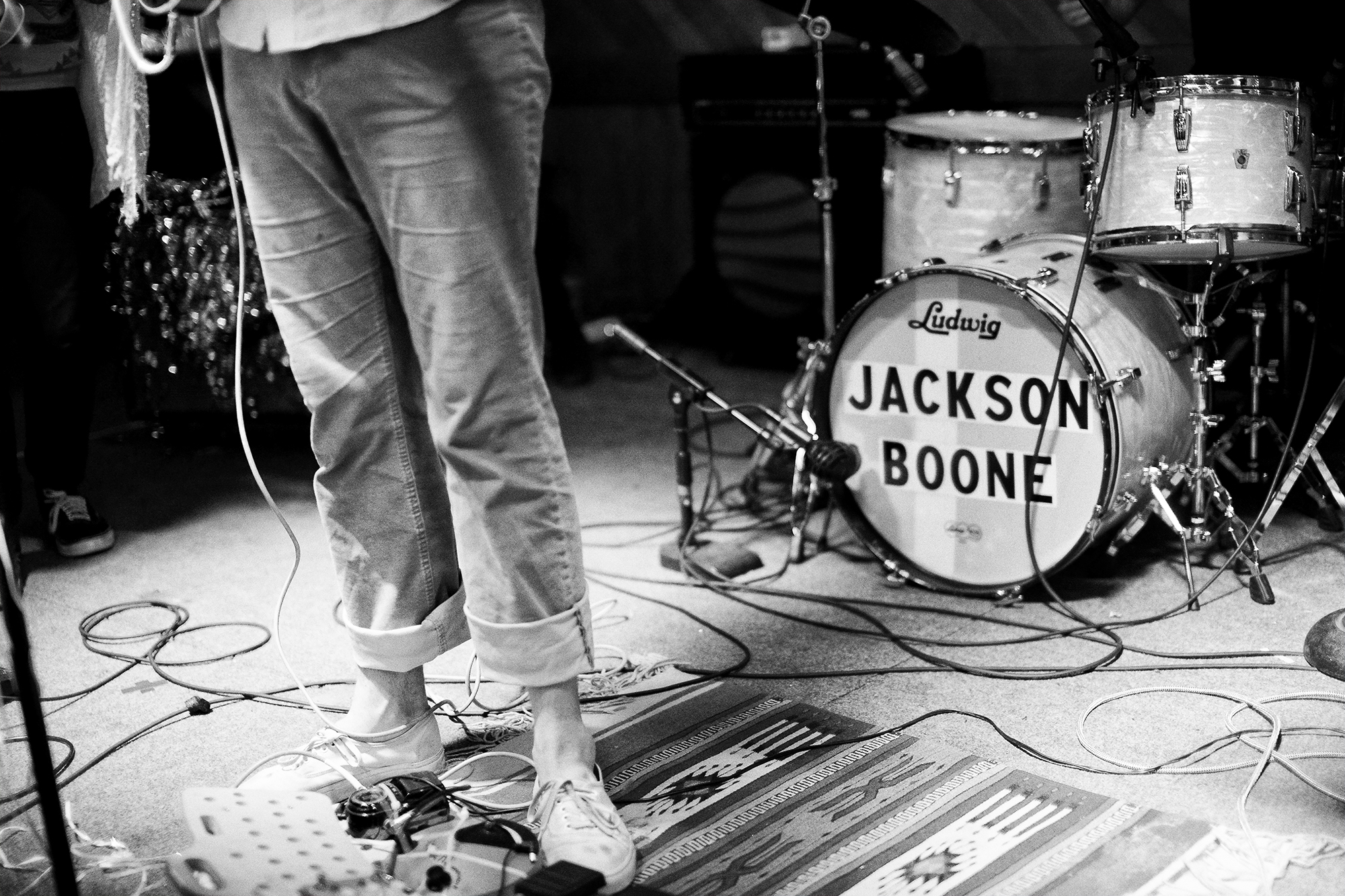
Those squishy, earwax-caked hearing protectors that rip away decibels on the cheap have long been the only option for budget-strapped musicians who either can’t afford expensive in-ear monitors, or aren’t on a big enough tour to get them for free. But if you ask a professional musician what they think about foam earplugs, they’ll invariably declare: We hate them. Foamies cut frequencies unevenly, making it impossible to dial in tone and obliterating higher-frequency instruments like guitars and synthesizers when playing on stage.
As a result, most of us end up compromising our hearing. For example, I typically only play with one in a single ear, rotating which ear gets protection throughout a given performance so I can actually hear how my playing sounds. Don’t tell my mother.
Certainly, in this age of advanced technology, there must be a better way.
This magnificent pair of $200 Bluetooth earbuds have convinced me foam will never touch my ears again.
It turns out, there is. At CES 2016, Digital Trends discovered the Here Active Listening System. Described as a device that changes how you hear the world around you, the Here Active impressed us enough during a brief demonstration on a noisy trade show floor to earn a Digital Trends Top Tech of CES award. You can imagine my elation, then, when we received a pair for review and I got to take them on my band’s tour to SXSW. A tour without foam!
Long story short: The Here Active are even more awesome on a loud live performance stage than they are in a noisy office. Two weeks on the road with this magnificent pair of $200 Bluetooth earbuds have convinced me foam will never touch my ears again — just as soon as they let me actually buy some.
How do they work?
A pair of Bluetooth-enabled earplugs, the Here Active system allows the listener to adjust the volume and tone of live environments through active equalization. Think of it as like having a graphic equalizer for your ears. The tiny buds come nestled in the safety of a small, plastic storage case, which also serves as their charger, and are controlled by a smartphone through an app available for Android and iOS.
A Kickstarter-funded project from Doppler Labs, Here Active offers what can best be described as augmented reality for your ears. The plugs can process and adjust sound in real time, which allows listeners to do things like turn real-world volume up or down, add effects, and equalize live sound. And it’s that split-second adjustability which makes the Here Active a unique product on the hearing-protection market.
On this tour, for example, I turned up my hearing to listen to Built to Spill shred the main stage at the Treefort Music Festival, but turned it way down while I was subjected to the godawful folk artist who got booked to play before my band in middle-of-nowhere Arizona.
Great for long drives in a 20-year-old van
Being able to adjust the volume of sound in all sorts of environments, my two weeks with the Hereplugs taught me, is a seriously underrated superpower.
Here Active performed admirably in my pursuit of sonic sanity in the van.
Tired of hearing your bandmates’ talk? Sick of the ear-crushing road noise that constantly emanates from every crevice of your early-’90s van? Really, really need to focus on a writing deadline but bandmates are blasting trap music at full volume? The Here Active is for you and anyone else who must deal with auditory annoyances.
They might not be perfect in flat decibel reduction — more of Fetty Wap’s lows sneak through than his highs — but they do a great job of cutting out up to 23 decibels of sound pressure, and offer much more stable high-frequency pass-through than foamies could ever hope to.
These little plugs shine on stage
Though the Here Active performed admirably in my pursuit of sonic sanity in the van, they shined brightest when used on stage.
Because they are so easily adjustable, I was able to perfectly set the volume and EQ to fit each unique stage we performed on, keeping the crisp highs of my cymbals and our guitarists’ Gretsch, but at a much easier-to-digest volume. Smaller rooms got more volume scooped out, bigger rooms less, and overall my onstage experience was more consistent than it had been in years. That’s a huge deal, and allowed me to tighten up my performance rather than worrying about whether I was correctly matching other members’ volumes.
Things sounded great, and I abated hearing loss.
In fact, the Here Active worked so well on stage that a few times I was fooled into thinking they weren’t on at all. The cut of decibels at most frequencies was so clean and even that the Here Active emulated full-volume sound in a way that made me forget how loud the “real” sound was. Until I removed my earplugs and got blasted with fuzzed-out guitar, I had little idea just how hard the plugs were working for me.
Better than the rest
For those of us hitting our mid-20s and realizing our hearing is going to take a huge, irreparable hit if we keep standing in front of stadium-sized tube amps between bouts of blasting Taylor Swift on our white iPhone headphones, there are precious few options that allows us to protect our hearing while actually … hearing.
On the low-cost end, there’s those dreaded foam earplugs. In the middle are a few specialized earplugs for musicians which, having purchased several, merely sound like overpriced foamies. And on the high-cost end, there are custom-molded earplugs and studio monitors like the Ultimate Ears Pro — the current live sound standard for big-name musicians.
At $200, the Here Active are simply the best option on the market.
Adjusting volume for different environments is possible with custom-molded earplugs, via changeable decibel filters, but they don’t offer the ease of use and immediacy the Here Active earplugs do, and they cost about the same.
The Ultimate Ears, still what most of us musicians would use if we could, cost $600 new — a steep price for sticker-conscious drum nerds. Plus, I can’t wear them anytime except on stage, and even then — I realized as I watched a big-name frontman pull them angrily from his ears while playing live recently — they don’t always work.
At $200, the Here Active are simply the best option on the market. Especially given their versatility. The only modification I would make — and I can’t believe I’m saying this — would be to add a Comply memory foam tip instead of the included silicone earpieces. Foam would mold to the ear for a better seal, and likely keep a bit more of that bass out.
Take my money, already!
Because they are busy giving them away to musicians (pick me!), and filling out orders for those who purchased them at Coachella, Doppler Labs has yet to make the Here Active Listening System available to consumers worldwide. But given other positive critical responses and how awesome I experienced them to be in the real world, they will make it to the normal market sooner than later.
And boy, I can’t wait until they do.
I’ve discovered that all garage rock sounds good with flange effects over everything, and, let’s be honest: I can’t fully ignore your crappy punk band with anything else.










